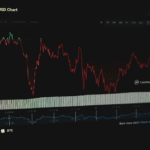
In the realm of blockchain technology, the terms “hard fork” and “soft fork” refer to two different methods of updating or changing the software protocol of a blockchain. These forks can have significant implications for the value and stability of digital assets, influencing investor decisions and market dynamics.
Hard Forks: A Split in the Blockchain
A hard fork is a radical change to a blockchain’s protocol that makes previously invalid blocks and transactions valid (or vice-versa). This kind of fork requires all nodes or users to upgrade to the latest version of the protocol software. In essence, a hard fork results in a split of the blockchain into two separate and incompatible chains. One of the most notable examples is the 2017 fork of Bitcoin, which resulted in the creation of Bitcoin Cash (BCH) alongside the original Bitcoin (BTC).
Implications for Value and Stability
Hard forks can create significant volatility in the market. When a hard fork occurs, holders of the original blockchain typically receive an equivalent amount of the new cryptocurrency, leading to immediate market speculation and trading. This often results in increased price volatility as investors decide whether to hold or sell the new assets. For instance, the creation of Bitcoin Cash led to substantial price movements for both BTC and BCH as the market adjusted to the new reality.
Additionally, hard forks can lead to community divisions and disputes among developers, miners, and users. These divisions can further contribute to market instability as different factions argue over the future direction of the blockchain. However, hard forks also foster innovation by allowing developers to explore new ideas and improve upon existing protocols.
Soft Forks: A Safer Upgrade Path
In contrast, a soft fork is a backward-compatible update to the blockchain. This means that nodes that do not upgrade to the new software will still be able to validate and interact with the blocks produced by the upgraded nodes. Soft forks introduce new rules but do not invalidate old ones, which allows the blockchain to continue functioning without splitting into two separate chains.
Stability and Market Impact
Soft forks are generally viewed as less disruptive than hard forks. They enable incremental improvements and feature additions without the risk of creating a new cryptocurrency. This can help maintain market stability as the existing blockchain continues to operate smoothly while adopting new enhancements. An example of a successful soft fork is the implementation of Segregated Witness (SegWit) on the Bitcoin network, which helped to improve transaction efficiency and reduce fees without splitting the blockchain.
However, while soft forks are less likely to cause immediate market volatility, they still carry risks. If a significant portion of the network decides not to adopt the new rules, it could lead to inefficiencies or vulnerabilities. Nonetheless, because soft forks do not create a new currency, they typically result in less dramatic market reactions compared to hard forks.
Strategic Considerations for Investors
For investors in digital assets, understanding the implications of hard forks and soft forks is crucial. Hard forks can offer opportunities for gains if the new cryptocurrency gains market acceptance and value. However, they also come with higher risks of volatility and market instability. Investors need to stay informed about upcoming hard forks and assess the potential impact on their portfolios.
Soft forks, while less likely to create new investment opportunities in the form of new currencies, can still influence the value of existing assets by improving network functionality and efficiency. Investors should consider how these incremental improvements might enhance the usability and adoption of the blockchain, potentially leading to long-term value appreciation.
Both hard forks and soft forks play vital roles in the evolution of blockchain technology. While hard forks can lead to significant market changes and volatility, they also drive innovation and competition within the cryptocurrency ecosystem. Soft forks, on the other hand, provide a more stable path for incremental improvements, contributing to the long-term resilience and functionality of the blockchain. By understanding these mechanisms, investors can better navigate the complexities of digital asset investment and make informed decisions that align with their risk tolerance and investment strategies.
Explore Blockchain Excellence with Kenson Investments
Kenson Investments is committed to excellence in blockchain asset portfolios and digital asset portfolios. Our team, including bitcoin investment consultants and digital asset management consultants, is dedicated to providing top-tier crypto asset services, ensuring transparency and dedication to our clients.
Engage with our team today to enhance your understanding and involvement in the digital asset space!














